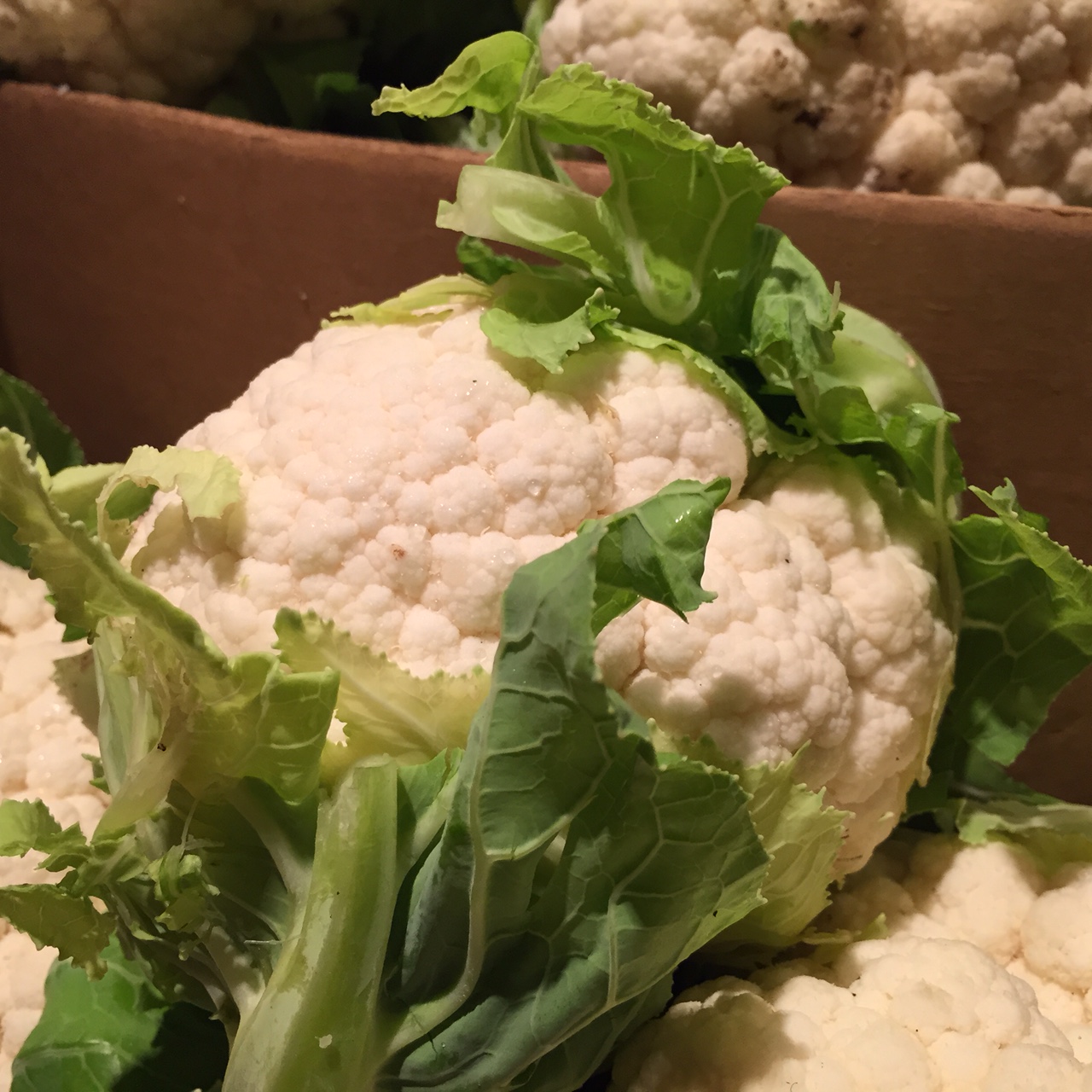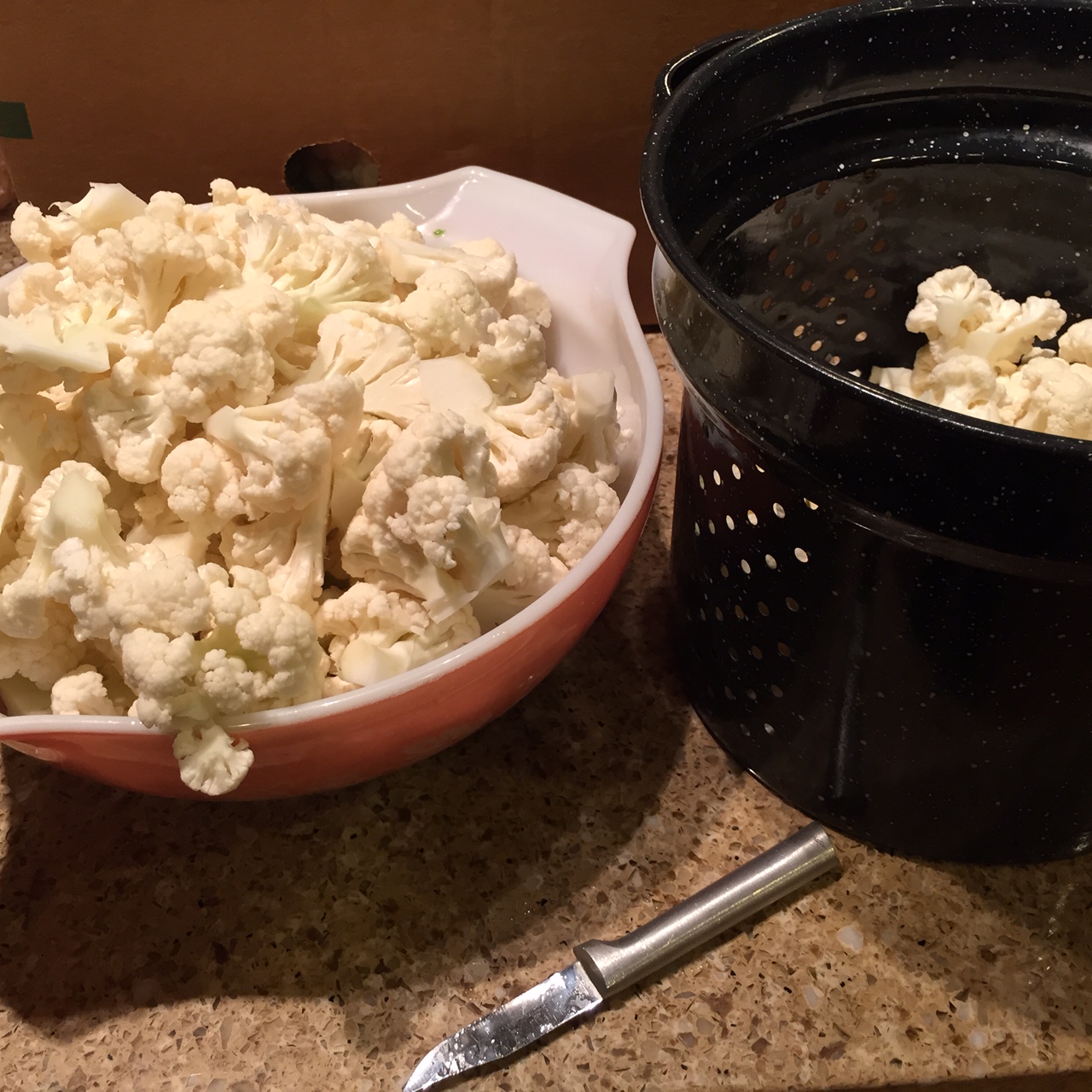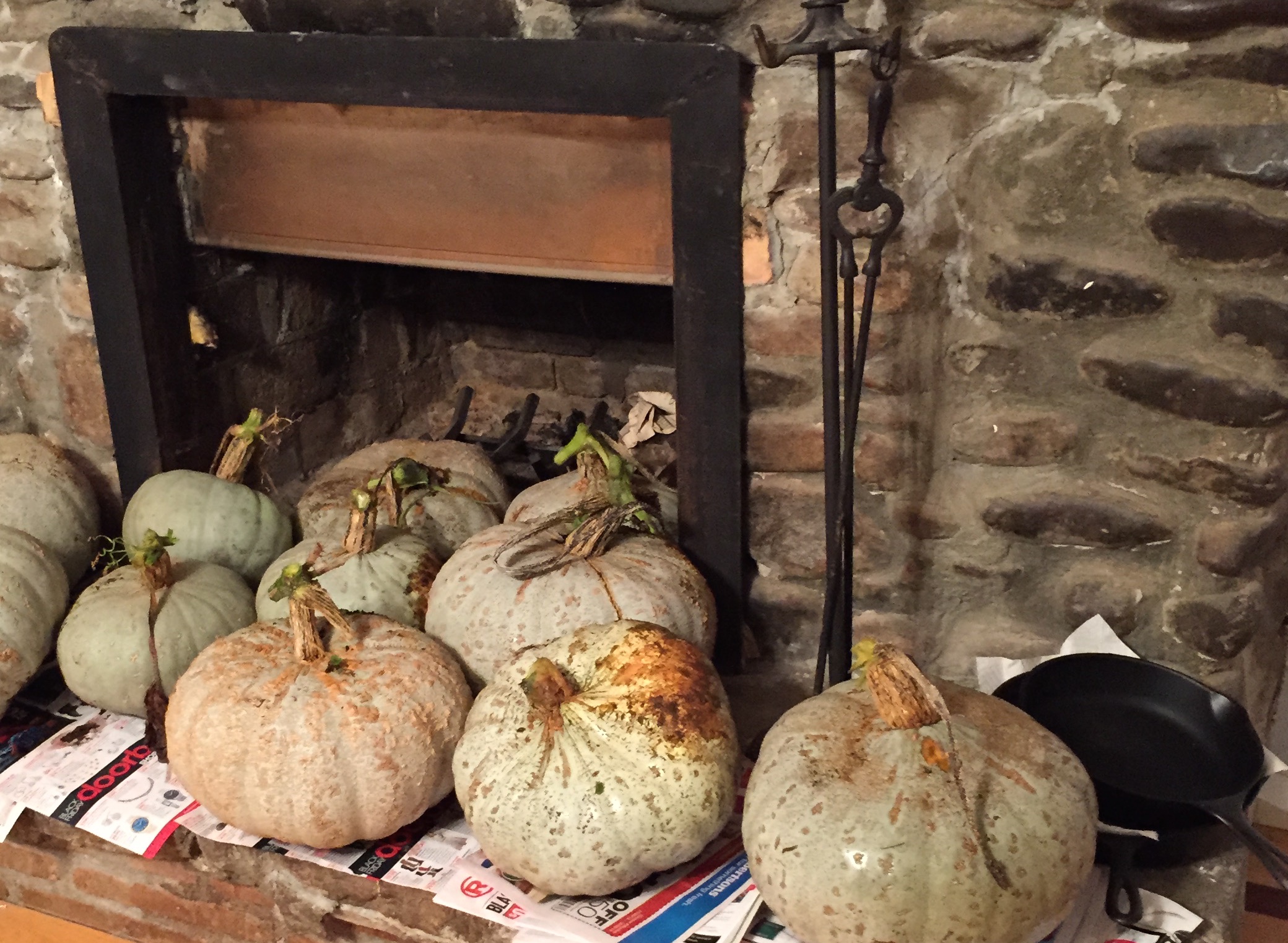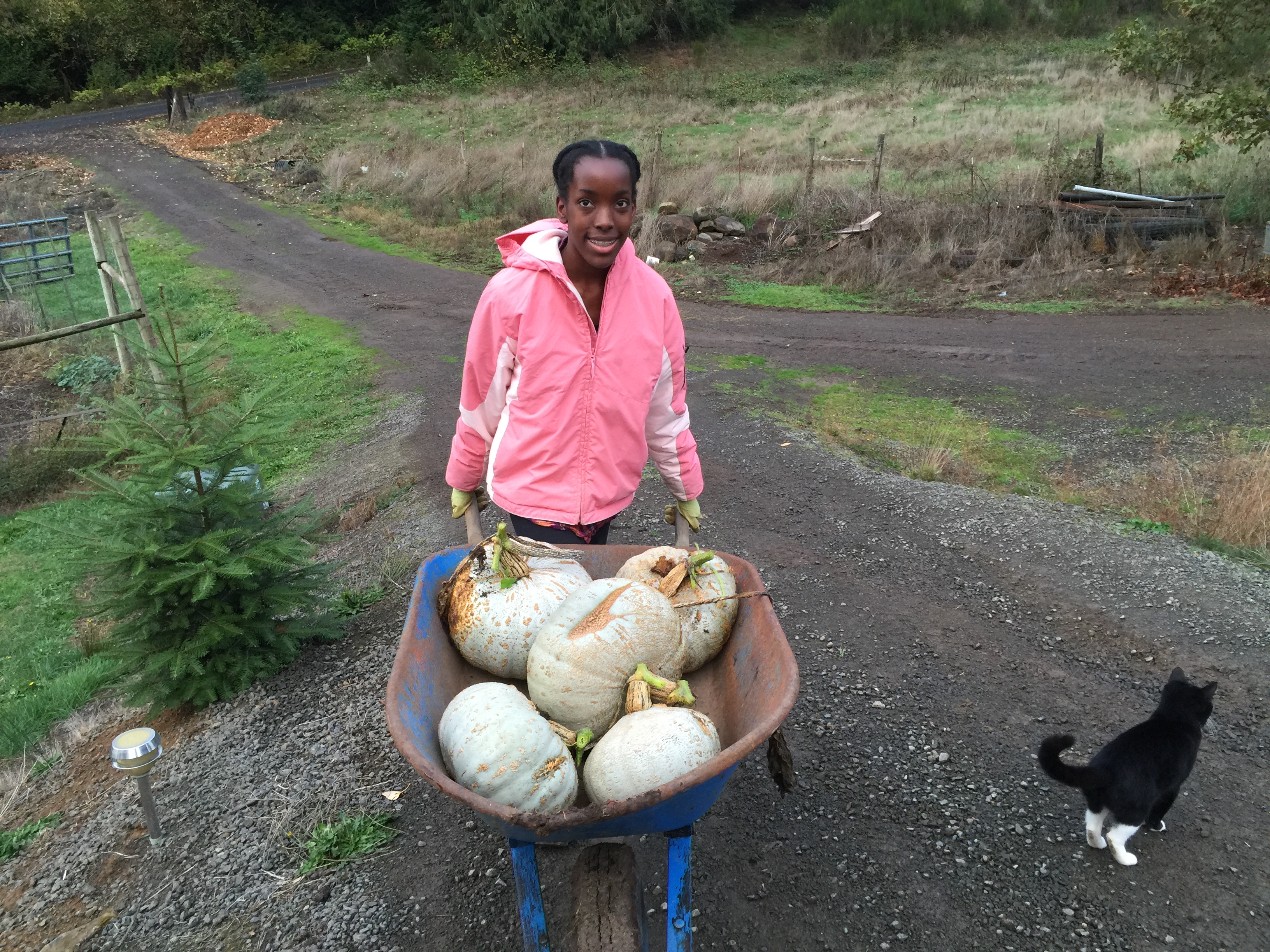
 I was blessed when a friend gave me an entire banana box full of cauliflower she had gleaned from a field that was about to be tilled up. I was delighted to get it and decided to freeze it. Some of it was a little muddy from the field, but I washed it very well and then chopped it into pieces. Then I blanched it for 3 minutes in boiling water in my blanching pot. You could drop it into a pot of boiling water and fish it out with a sieve after 3 minutes if you didn’t have one, but having it contained in a colander makes it easier. After that, the cauliflower was dumped into cold water in my very clean sink. The water was changed frequently so the cauliflower could cool down. When it floats, it is still too warm. Once it sinks, it is cool enough and was fished out and placed into a colander to drain. I was able to get 30 quart sized zip-top bags full. We love it eat it with cheese on top during the winter. It was a totally unexpected way to spend my evening, and I was very tired when I finally got to bed last night, but I was excited to have the cauliflower. A lot of food preservation happens when you “seize the moment” and I’m glad I did! My food storage was increased by quite a bit because my friend thought of me.
I was blessed when a friend gave me an entire banana box full of cauliflower she had gleaned from a field that was about to be tilled up. I was delighted to get it and decided to freeze it. Some of it was a little muddy from the field, but I washed it very well and then chopped it into pieces. Then I blanched it for 3 minutes in boiling water in my blanching pot. You could drop it into a pot of boiling water and fish it out with a sieve after 3 minutes if you didn’t have one, but having it contained in a colander makes it easier. After that, the cauliflower was dumped into cold water in my very clean sink. The water was changed frequently so the cauliflower could cool down. When it floats, it is still too warm. Once it sinks, it is cool enough and was fished out and placed into a colander to drain. I was able to get 30 quart sized zip-top bags full. We love it eat it with cheese on top during the winter. It was a totally unexpected way to spend my evening, and I was very tired when I finally got to bed last night, but I was excited to have the cauliflower. A lot of food preservation happens when you “seize the moment” and I’m glad I did! My food storage was increased by quite a bit because my friend thought of me.
Tag Archives: Harvest
Sweetmeat Squash Harvest

We were blessed with a huge harvest of Sweetmeat squash. In the picture above, my 15-year-old, Ja’Ana, is bringing a wheelbarrow full up to the house for curing. There are many more down in the second garden by the barn. Some of these may be too small and immature to be good, but most are going to be delicious. We will sort them out by color, choosing to take the grayish ones over the greener ones. Also, the mature ones will be harder, and usually bigger. If we really can’t tell by looking, we simply open one up, cook a little bit in the microwave, and we know right away whether or not it has the delicious flavor we expect, or whether it is chicken food.
You will notice in the picture that Ja’Ana cut them off with a knife, leaving a stem. This helps them stay good longer. We also put them in a dry place in the house for a couple of weeks to cure. This seems to lengthen their life as well.
After they have been cured, we store them in the garage or shop in a cool location. Usually, we store them in a single layer. Sometimes we use newspaper to put them on, as seen in the picture above. At times, we have stacked squash in plastic crates in the garage. Last year, they were out in the shop on a pallet and the mice crept up through the boards and ate holes in them! We’ve even had chickens peck holes in them when we’ve left them out too long! So, we’ve learned to be more careful and you can be sure they aren’t going into the shop this year.
Once we have the squash cured and stored well they keep for months. If one gets a soft spot, usually that can be cut out and the rest cooked and frozen, thereby saving most of the affected squash.
To break one of these open, we use a hatchet and chop it. A large knife will work, but it is hard to safely cut it with a knife. Another method we have used is to drop the squash on a hard surface, such as a concrete sidewalk. It will break and can then be cleaned. The seeds are removed with a spoon, and the cut pieces are set onto a foil-lined cookie sheet and placed into a 350 degree oven. The squash is then roasted until soft, anywhere from 1 hour to 2, depending on the size of the pieces. It is done when a fork can easily pierce the flesh. Then the cooked squash is scooped out with a large spoon and ran through a food mill. I use a Foley Food Mill that I have had for years.
Because the squash are so large, it is nearly impossible for our family to eat one up before it goes bad. We simply freeze the puree.
We use squash in many ways. Sometimes it is served as a vegetable, and brown sugar is often sprinkled on top. We use this squash to make all of our pumpkin pies and other baked goods that call for pumpkin. It is less stringy than true pumpkin and has a very sweet flavor and a non-watery texture.

